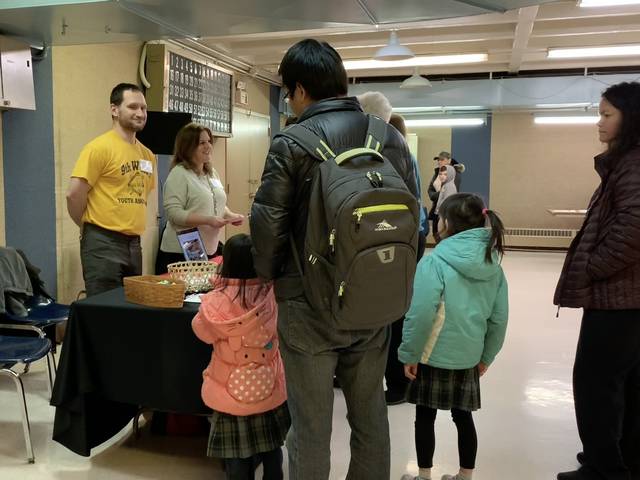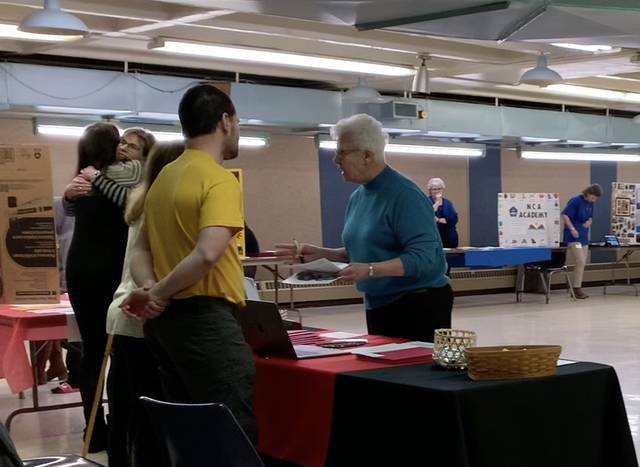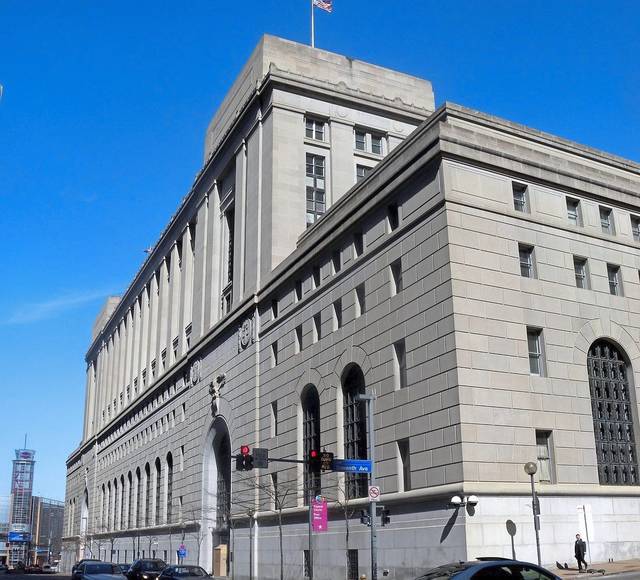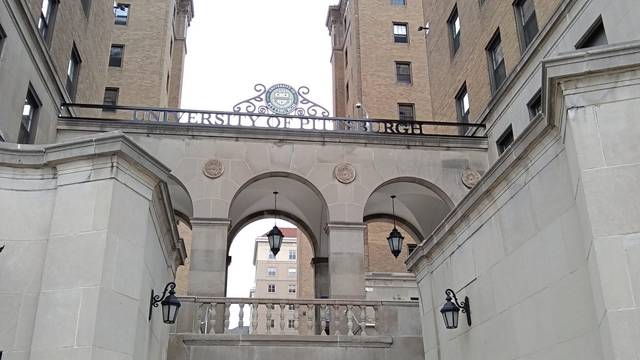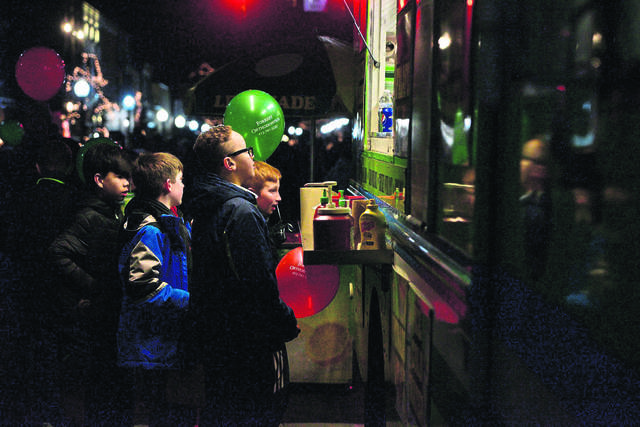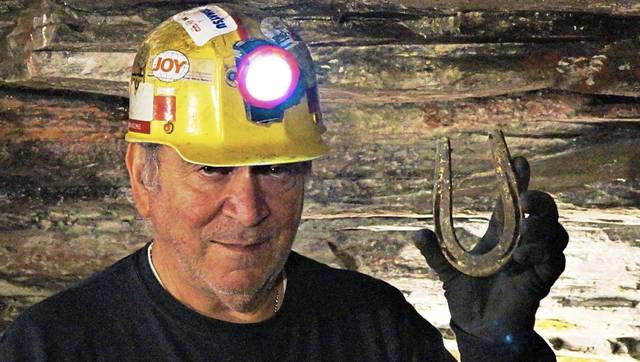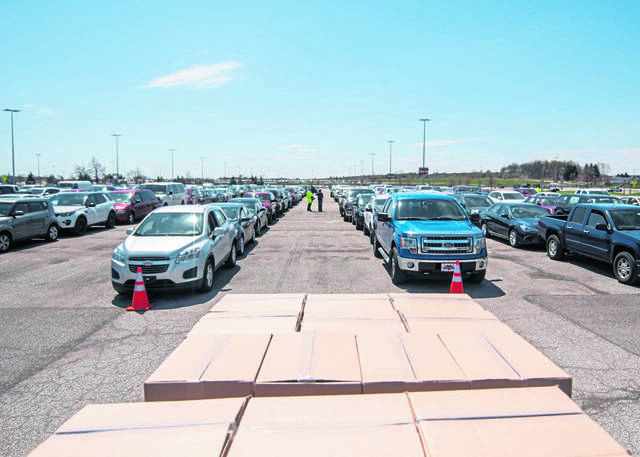Some children at St. Maria Goretti’s had a hard time learning their elementary school would be closing for good this summer, several parents and community members lamented Thursday night.
“They were upset. Some were in tears,” said Sister Norma Rodriguez, a Brooklyn, N.Y. native and 10-year volunteer at the nearly century-old school in the heart of Pittsburgh’s Bloomfield neighborhood.
They don’t want to have to say goodbye to their classmates, trusted mentors and familiar grounds of the tight-knit school of about 130 students in grades preschool to 8th grade, family members and teachers said.
Their households span several nationalities and varying income levels. Many rely on scholarships and other financial aid to be able to afford private school tuition.
“Some of these kids come from broken homes. We feed them breakfast, we feed them lunch. We give them a snack and help them with their homework,” said Rodriguez, who lives in the convent next to the school and volunteers in several capacities, including its after-school program. “Sometimes they come knocking on our doors needing dinner, we give them dinner.
“What kind of other school is going to be able to be that kind of home for them?”
Their parents now are tasked with choosing from among the eight remaining schools in diocese’s East Regional area, or additional options made available via the Extra Mile Education Foundation. The foundation specializes in helping children in urban and high-poverty areas afford private school. Catholic elementary school tuition prices can range from $4,000 to more than $5,000 a year.
On Thursday, the diocese put on a school fair for parents of soon-to-be displaced students to learn more about their alternatives and process for applying elsewhere.
For many attendees, the mood was somber. Some parents were sad, others angry.
‘Not giving up hope yet’
Shannon Janicky of Stanton Heights has begun looking into enrolling her daughter, a sixth-grader, at Christ Divine Academy in Aspinwall.
“But we’re not giving up hope yet,” Janicky said.
While representatives of a dozen schools made their pitches and took questions at booths in St. Maria Goretti’s basement, Janicky joined a small group of parents and Bloomfield residents upstairs for a candlelit vigil. They held hands and prayed for the possibility of Roman Catholic Diocese of Pittsburgh Bishop David Zubik to reverse the decision to shut down the school.
The diocese made clear in an announcement late last month that both St. Maria Goretti’s and East Catholic in Forest Hills, and four schools in the South Hills will merge into one at the end of the current school year, as part of a broader restructuring and regionalization plan.
“An angel could fall from the sky,” longtime Bloomfield resident Linda Vacca said shortly after the group broke from praying and shifted to swapping stories about beloved memories of the school and its graduates.
“There’s always hope,” chimed in Patty Lasasky, vice president of the Bloomfield Citizens Council. “We’re praying for an angel.”
The diocese cited climbing debts coupled with declining enrollments as drivers in the difficult decisions, which Zubik he said made after years of input from parish and school leaders, regional boards and his own reflective prayer.
“As hard as it is to lose a beloved school,” Zubik said in a statement, “these steps will help Catholic education remain affordable, accessible and sustainable for a new generation.”
Losing urban schools to the suburbs
Vacca doesn’t have any children, but the alumna roamed St. Maria Goretti’s halls and played there as a child. Now she serves on the school’s advisory board.
The latest changes and pattern of Catholic school closures in recent years flag a broader concern for Vacca — who argues Zubik is “leaving the schools open in parish areas where they have deeper pockets.”
She’s worried that an unfair disproportion of schools in urban areas are closing in favor of growing schools in wealthier suburban areas.
Most St. Maria Goretti students live nearby or a short bus ride away, in Pittsburgh neighborhoods such as Bloomfield, Polish Hill, Garfield, Oakland and Shadyside.
“This is a needy school. Half of the kids here, if they’ve got to go to a new Catholic school and buy new uniforms, it’s a financial disaster for them,” Vacca said. “Even paying the $200 application fees.”
Some of the diocese’s proposed alternatives are over 10 to 20 miles away, such as Our Lady of the Most Blessed Sacrament School in Natrona Heights, Harrison.
“Why would they want these children to go to Natrona Heights?” Vacca said. “It just doesn’t make sense.”
Diocesan officials say that the closures and mergers will help stabilize the finances and bolster the resources of all schools, which will lead to better resources and facilities for all students.
“And you’ll also have to get up at 5 o’clock in the morning to catch a bus,” said longtime Bloomfield resident Francesca Shane, 77. Shane sang in St. Maria Goretti’s school choir as a child and sent her four children there. “It’ll take them two hours to get back and forth to school.”
Ripple effect on community
Several Bloomfield residents said they are worried what will become of the school buildings, and how the loss of the school could negatively impact participation in their parish and surrounding community.
Nearly 700 people signed a Change.org petition to save the school as of 10 p.m. Thursday. Some signed with comments saying they were parents who credited their now-adult children’s success to the school or that they had children, grandchildren and great grandchildren who enrolled there.
“What will happen to the community without the school and church?,” one signer wrote, in part.
An Edinboro resident cited the fear that “closing the school will have negative consequences on the community fabric of Bloomfield.”
“Schools, churches, and civic groups provide neighborhood stability,” the commentor wrote. This church and school have been pillars of Bloomfield community for over 100 years. The loss of the school will hurt everyone.”
In a Jan. 24 news release, the diocese reported that St. Maria Goretti’s enrollment dropped from 172 in 2016-17 to 131 this school year.
The diocese says the school was confronting debt topping $800,000 as of last year, and has retired some past debt but was set to begin accumulating another $250,000 in debt annually.
Some parents are skeptical about the extent of the school’s financial straits and want to know more details about what’s contributed to its debt.
School volunteers say they had been working hard to raise extra cash to patch any shortfalls. Fundraisers have included candy and hoagie sales and benefits that raised $10,000 in a day.
Last May, a designer purse raffle generated about $7,300. In August, they raised $16,000 by participating in the neighborhood’s annual Little Italy Days.
“We were set to make $10,000 a month, that was our goal, for 12 months,” Vacca said.
Like Mass attendance, enrollment in Catholic schools has been on the decline. In 2000, about 24,000 students were enrolled in 102 diocesan schools. By 2016, about 12,000 students were enrolled in 59 schools.
In 2017, several North Hills schools became the first to undergo major changes using the regionalization model, and their finances and enrollment already are proving to stabilize there, according to the diocese.
If the closure decision simply had to be made, several parents said, they would have appreciated more than a few months’ notice.
“So then we could come up with a contingency plan, we could do something, we could try,” Janicky said. “We found out from the news.”
Applications for high-demand charter schools in the region closed in December. Some Catholic options stop accepting applications as soon as March.
Diocesan officials encouraged parents to contact schools directly to arrange for tours or learn more about enrollment and financial aid options, or go to PERCES.org/.



